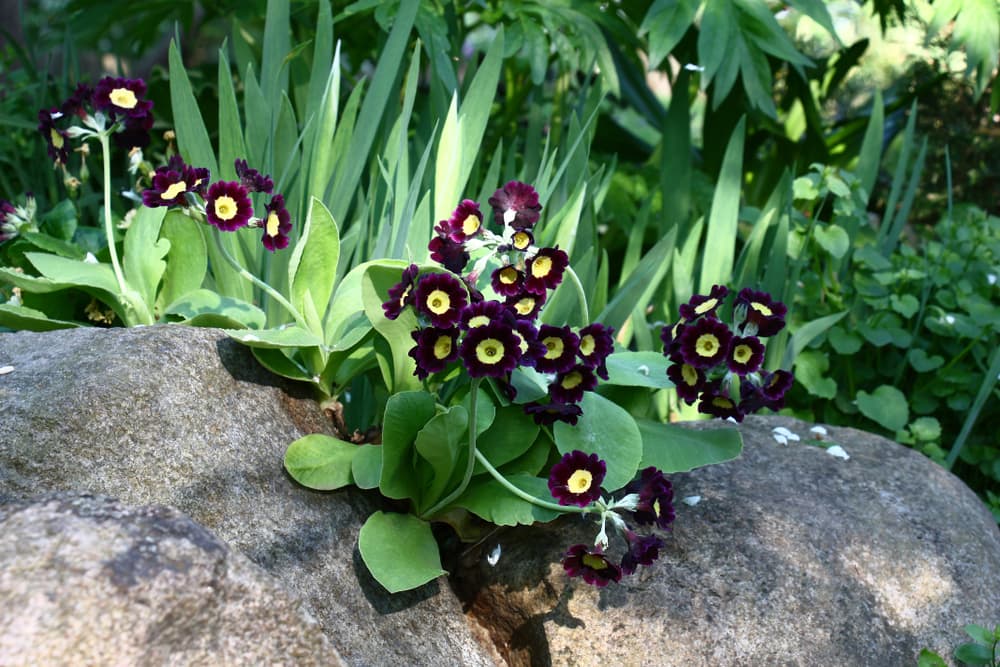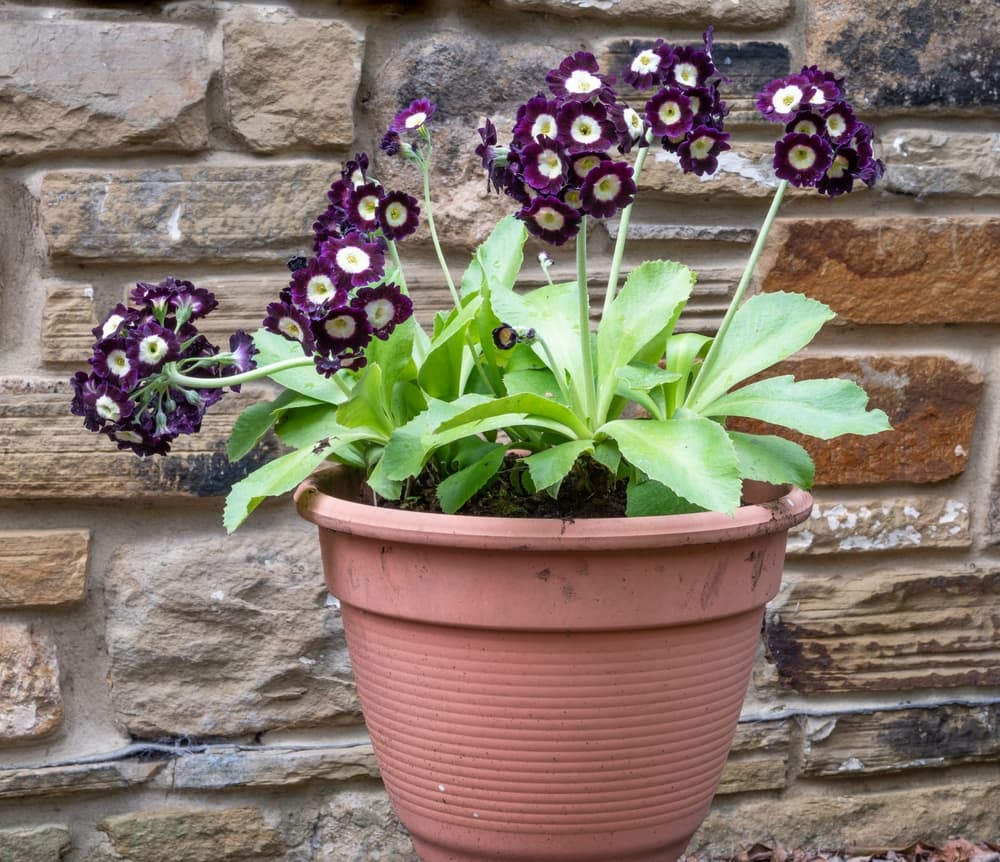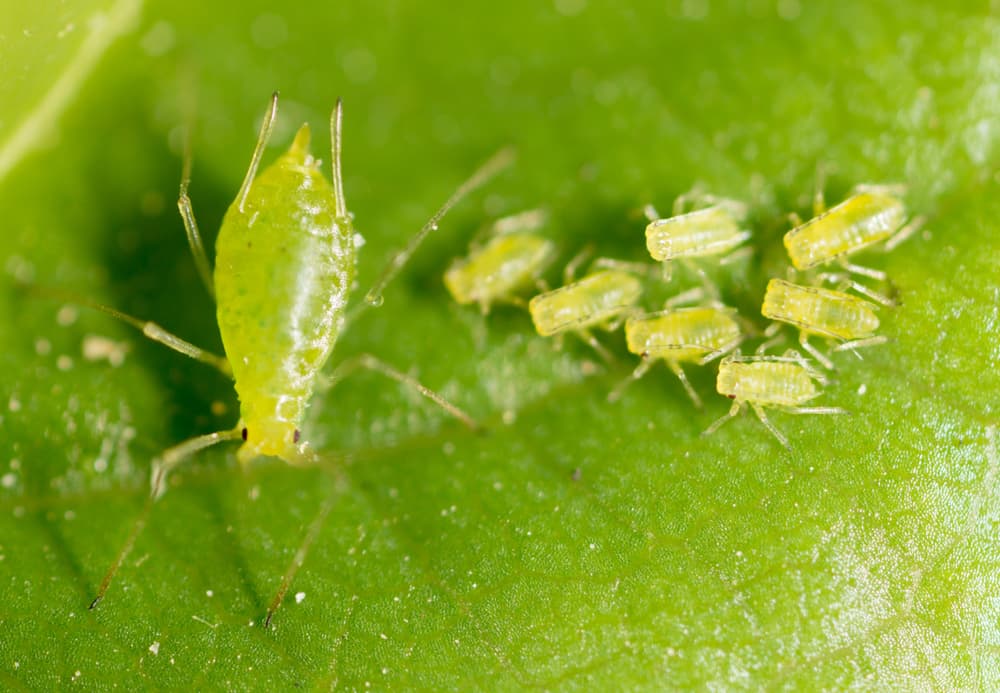PERENNIALS > AURICULA
Reviewed By ROY NICOL

Roy is a Professional Gardener and Horticultural Consultant, specialising in large garden year-round maintenance and garden development. He is an RHS Master of Horticulture and uses his research in the application of no-dig methods in ornamental garden settings. Roy has been a Professional Gardener for more than six years and is a member of the Chartered Institute of Horticulture, Professional Gardener's Guild and Association of Professional Landscapers (Professional Gardener).
IN THIS GUIDE
AURICULA GUIDES
Auriculas produce flowers in an amazing array of colours and patterns, from essentially ‘block colour’ blooms in bright cheery tones through to highly intricate patterns comprising of daubs, stripes, and gradations in hues both diffuse and striking.
Their diverse varieties mean that these herbaceous perennials are perfect for beds and borders but also for greenhouse cultivation and decorative planters.
Centuries of such cross-breeding and confusion mean that – though there may or may not be such a thing as an ‘Auricula Society’ or a ‘Primula Society’ – there is such a thing as the ‘Auricula and Primula Society’ – several of them, in fact.

They occur as salver-shaped single flowers and complex, ruffled double flowers.
Overview
| Botanical Name | Primula auricula L. |
| Common Name(s) | Auricula |
| Plant Type | Perennial Flower |
| Native Area | Europe |
| Hardiness Rating | H5-H7 |
| Foliage | Evergreen |
| Flowers | Solitary or umbels of salver-shaped flowers in pink, purple, yellow, white and dark green |
| When To Sow | January or February |
| Flowering Months | April, May |
Sunlight
Preferred
Full Sun or Partial Shade
Exposure
Exposed or Sheltered
Size
Height
0.1 – 0.2M
Spread
0.1 – 0.2M
Bloom Time
Spring
Soil
Preferred
Most Soil Types
Moisture
Moist but well drained
pH
Any
Some of these, for example, Primula ‘Cinnamon’, could even be mistaken for a type of rose.
Double Auriculas claim among them a few of the rare flowers that come in leaf green, and have pure black colouration.
As for the single types, the descriptor ‘salver’ is a particularly apt one, for a large number of varieties resemble hand-painted miniature porcelain crockery.

The ‘basic’, simplest types are identified by the flowers’ velvety appearance, white central disc and bi-tonal gradation on the corolla, as professional gardener Roy Nicol shares:
“Some plants have a white or yellow powder called the farina coating the leaves and, on occasion, the flower.”
‘Basic’ or ‘complex’, one way or another Auriculas are highly ornamental plants that bear showy flowers – and ultra-showy or ‘show-offy’ flowers in view of their unique and complex patterns, extraordinary palette, and countless colour combinations.
These supremely ornamental plants come at a price, however.

Not surprisingly, in general the more ‘complex’ and prized the variety, the more difficult it is to grow and the more high-maintenance it is.
I’d advise that even experienced gardeners who want to take the plunge into growing Auriculas would do well to begin by growing Border or Garden Types and Alpine types.
For gardeners who are diligent and determined, Auriculas are quite possibly the top choice to introduce unmatched colours, show, and ornamental interest to your garden.
Habitat & Growing Conditions
As Auricula originate in Alpine and Sub-Alpine regions, cool to cold, dry climates suit them best.
They are also accustomed to frequent rainfall but must have well-drained soils.
Though Auricula species are hardy enough to thrive in exposed locations, cultivars should be grown in sheltered locations.

All varieties are winter hardy, and their hardiness spans USDA Zones 3 to 8 (H5 to H7 RHS Zones).
How To Grow
Growing From Seed
There is no agreement on the best season to plant Auricula seeds.
The answers you get will vary by society, nursery, or expert, and will span the year from November through July!
Personally, I would propose that seeds be sown as winter transitions into spring.
Where To Plant
Border Auriculas have a name that indicates just where they ought to be planted – borders and also beds and rock gardens, which is where Auricula species can be planted too, and also Alpine types if the climate is suitable.
All types are excellent choices for small gardens and for courtyards.

Show types are perfect to grow as specimen plants in terracotta pots and in small, decorative planters in a cold greenhouse.
Auricula varieties need to be grown in a location where they get part-sun part-shade, are protected from high heat and humidity, and are sheltered from harsh elements but where there is a free flow of fresh air.
“After overwintering under protection, Auriculas are often displayed in ‘Auricula Theatres’ when they come into bloom, where they can be displayed to their best advantage,” explains Roy.
Plant Care
As a general rule, Auricula species and the Border or Garden types are the least difficult to grow, and the Show Types, such as Fancy Show, being quite difficult.
Temperature
These often need to be grown in a cold greenhouse or in a cold frame.

It should not get too hot, too dry, too wet – they are sensitive plants and require care, alertness, and gardening expertise.
Because most Show Varieties can be finicky, what one can offer in an outline are broad recommendations that may need tweaking and tuning.
Soil & Watering
These plants should be grown in humus-rich soil or compost-based loam; in either case some grit or gravel should be mixed in.
The soil should drain very well but should be kept moist in spring and summer.

They need frequent but moderate watering but only through spring and summer.
In the winter months they should be kept dry and get a mere sprinkling of water.
Free-flowing fresh air is necessary for Auricula health.
Feeding
You may apply a general-purpose organic fertiliser in January.
In April, lightly feed the plants with 5-10-5 fertiliser to boost flowering.
Pruning
These small plants do not need pruning other than removal of diseased or abnormal parts.
All you need do is deadhead in the flowering season.
Common Problems
Auriculas are among those plants that are most prone to pests and diseases – you could almost say, if a plant disease or pest exists, Auricula cultivars – and even some species – are susceptible to it.

A laundry list of diseases and pests includes, leaf aphids, root aphids, leafhoppers, glasshouse red spider mite, vine weevils, slugs, botrytis aka grey moulds, leaf spot, and plant viruses.
From among all of these worrying threats we feel that root aphids, botrytis AKA grey mould, and vine weevil pose the greatest danger to Auriculas in the UK.
Skilled and experienced gardeners may be able to cure plants taken down by these problems.
Where these sensitive plants are concerned, the best plan is to be vigilant and practise prevention by following the plant care recommendations above.


